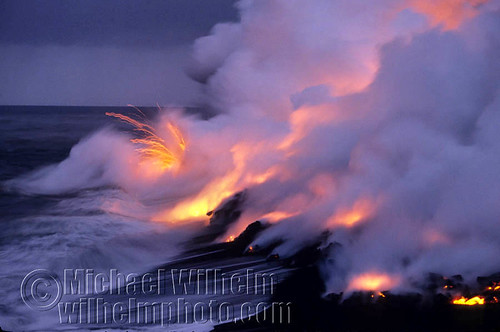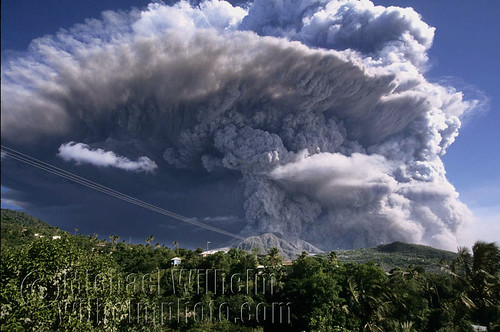The question hadn’t occurred to me until I stood there watching molten rock from the volcano Kilauea, in Hawaii, flowing into the ocean. Lava, on occasion, explodes when it’s rapidly cooled by sea water sending tracers flying. But what makes magma (molten rock below the earth’s crust) flow out of shield volcanoes like Kilauea in spattering bursts and fluid rivers of lava (molten rock on the earth’s surface) while strato-volcanoes like Mt. St. Helens explode with such tremendous force?
In a word, the answer comes down to viscosity. As nature would have it, what makes magma fluid or thick and “gooey” comes down to a fairly complex cocktail including the chemical composition of the source rock, temperature and gas content. In Brief, low viscosity magmas flow more easily and allow gases to escape and the thick stuff can trap gases building pressure to the point that literally moves mountains. In either case, when magma reaches the earth’s surface it’s an awesome sight to behold.
Shortly after my observations at Kilauea I became aware of the Soufrierre Hills volcano that was devastating the carribean island Montserrat. I couldn’t resist the opportunity to witness an active shield and strato volcano within six months of each other.
In Hawaii the relatively fluid lava has been blanketing the slopes of Kilauea and adding land mass to the big island for centuries. People have been displaced from their homes and a new Park Service Visitor’s Center was leveled shortly after its completion. On Montserrat the capitol city of Plymouth was devastated by volcanic ash and the airport rendered nonexistent by a pyroclastic flow. Refugees crowded onto a corner of the island shielded by topography from the volcano’s wrath. The island felt very small indeed when a small eruptive event sent an ash plume 15,000 into the sky during my visit. What a difference a bit of viscosity can make!



One Response to A Tale of Two Volcanoes